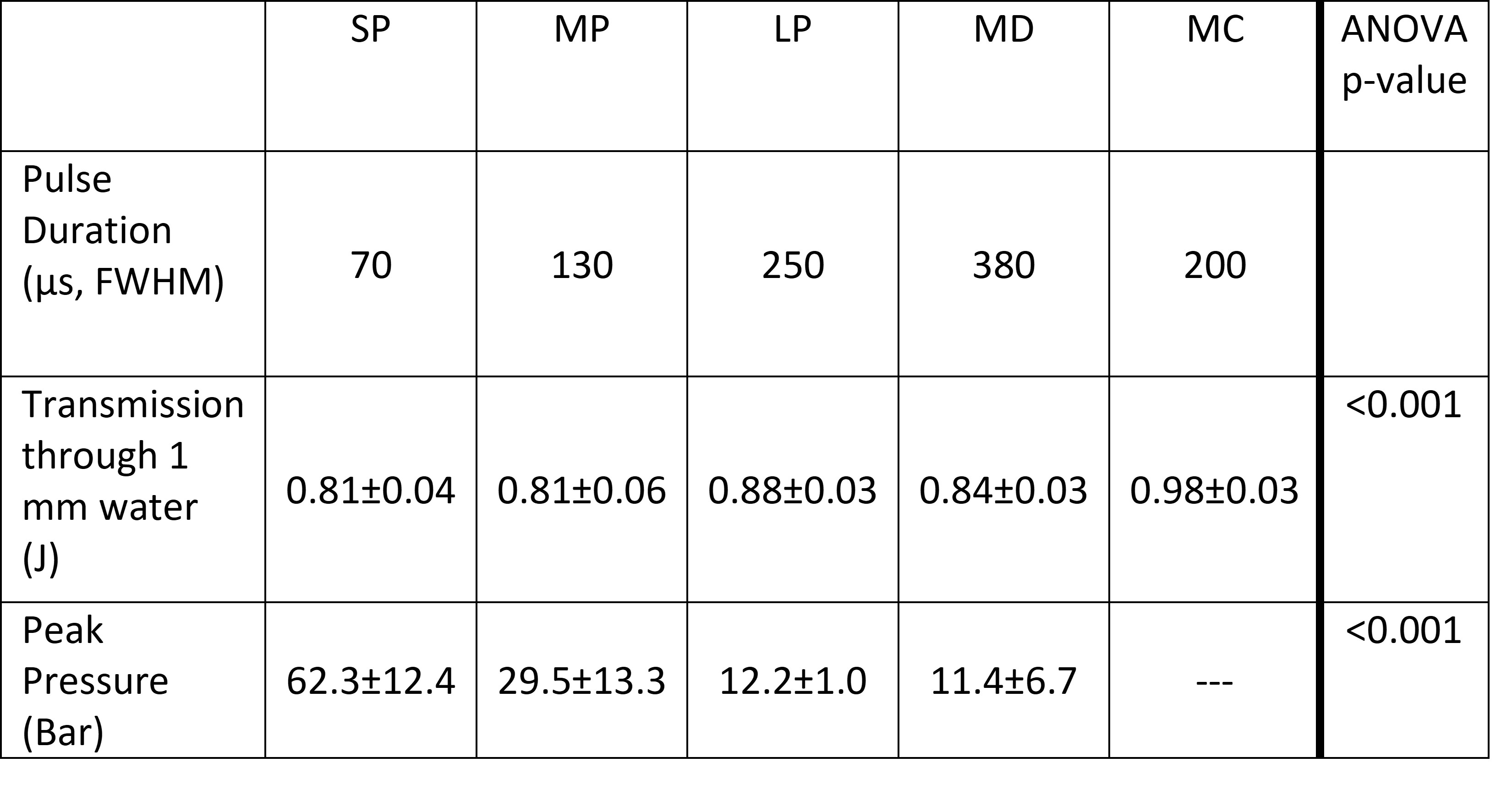Back
Poster, Podium & Video Sessions
Moderated Poster
MP14: Stone Disease: Surgical Therapy (including ESWL) I
MP14-10: Mechanisms of Pulse Modulated Holmium:YAG Lithotripsy: Pulse Transmission and Shock Wave Pressure
Friday, May 13, 2022
2:45 PM – 4:00 PM
Location: Room 225
Jason King*, Austin, TX, Nitesh Katta, Irvine, CA, Joel Teichman, Vancouver, Canada, James Tunnell, Austin, TX, Thomas Milner, Irvine, CA

Jason King, PhD
Graduate Research Assistant
The University of Texas at Austin
Poster Presenter(s)
Introduction: Previous Ho:YAG lithotripsy studies suggest that the dominant mechanism is photothermal. Recent studies have highlighted ablation through water jet impingement or by cavitation induced shock waves. If the photothermal mechanism is dominant, an optimized pulse mode would deliver the most photons into the stone for lithotripsy. If the photoacoustic mechanism is dominant, then an optimized pulse mode would produce a high-pressure cavitation induced shock wave. In this study we compared the photon transmission through a 1 mm water layer and the peak pressures for a variety of Ho:YAG temporal pulse modes. Results are compared to experimentally measured ablation volumes to better understand the mechanisms in Ho:YAG lithotripsy.
Methods: Five pulse modes from a clinical Ho:YAG laser (MOSES Pulse 120H, Lumenis) were compared, each with a pulse energy of 1J: short (SP), medium (MP), and long (LP) pulse durations, Moses Distance (MD), and Moses Contact (MC). A 230 µm optical fiber was placed 1 mm from a glass surface at normal incidence. A power meter (PM10, Coherent) directly behind the glass surface measured the average power for a train of pulses. The average pulse energy transmitted through 1 mm water was calculated by correcting for glass absorption and reflection loss. Measurements were repeated 5 times for each pulse mode. Next, the fiber was placed 5 mm above a pressure sensor (112A21, PCB Piezotronics) at normal incidence. Pressure transients were recorded and corrected for a separation distance of 1 mm. Results were compared with ablation crater volume data from BegoStone phantoms and human stones with single 1J short and 1J MD pulses per location with a fiber separation distance of 1 mm
Results: Transmitted pulse energy and peak pressures are shown in Table 1. Ablation volume results in water show significantly larger crater volumes for MD vs. SP for Begstone and struvite stones. No statistical significance was observed between MD and SP volumes for COM or uric acid stones.
Conclusions: Experimental data suggests stone ablation is primarily photothermal. SP pulse mode delivery resulted in similar photon transmission and 5.5X greater peak pressure compared to MD and resulted in similar or smaller ablation craters. Enhanced ablation from the tested pulse modulation is composition specific and requires further experimentation with human stones.
Source of Funding: Work was partially funded by Lumenis

Methods: Five pulse modes from a clinical Ho:YAG laser (MOSES Pulse 120H, Lumenis) were compared, each with a pulse energy of 1J: short (SP), medium (MP), and long (LP) pulse durations, Moses Distance (MD), and Moses Contact (MC). A 230 µm optical fiber was placed 1 mm from a glass surface at normal incidence. A power meter (PM10, Coherent) directly behind the glass surface measured the average power for a train of pulses. The average pulse energy transmitted through 1 mm water was calculated by correcting for glass absorption and reflection loss. Measurements were repeated 5 times for each pulse mode. Next, the fiber was placed 5 mm above a pressure sensor (112A21, PCB Piezotronics) at normal incidence. Pressure transients were recorded and corrected for a separation distance of 1 mm. Results were compared with ablation crater volume data from BegoStone phantoms and human stones with single 1J short and 1J MD pulses per location with a fiber separation distance of 1 mm
Results: Transmitted pulse energy and peak pressures are shown in Table 1. Ablation volume results in water show significantly larger crater volumes for MD vs. SP for Begstone and struvite stones. No statistical significance was observed between MD and SP volumes for COM or uric acid stones.
Conclusions: Experimental data suggests stone ablation is primarily photothermal. SP pulse mode delivery resulted in similar photon transmission and 5.5X greater peak pressure compared to MD and resulted in similar or smaller ablation craters. Enhanced ablation from the tested pulse modulation is composition specific and requires further experimentation with human stones.
Source of Funding: Work was partially funded by Lumenis


.jpg)
.jpg)